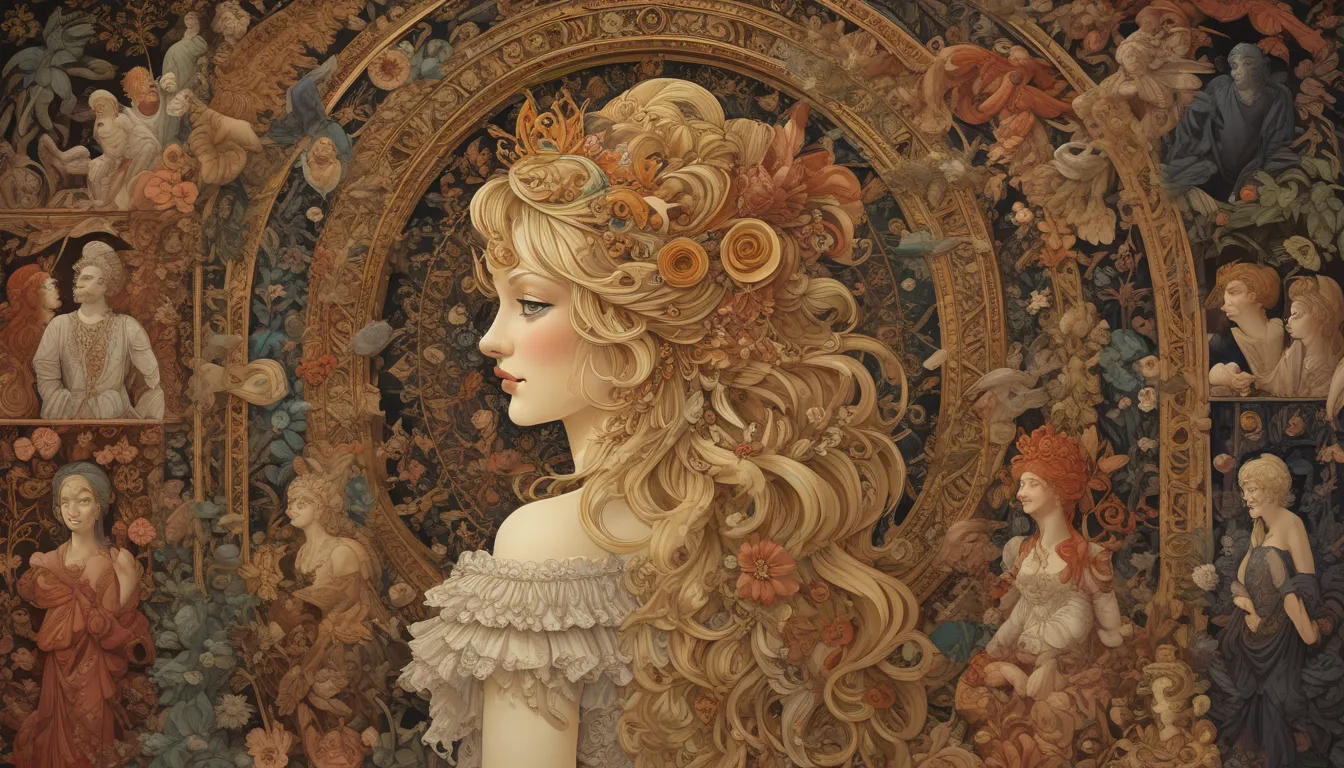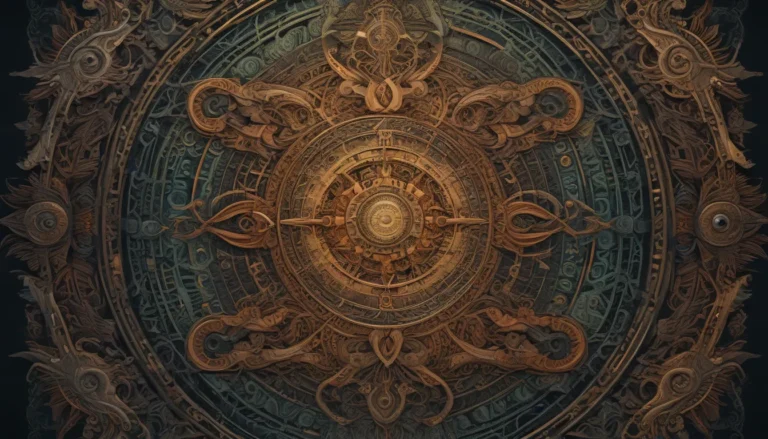The images in our articles may not match the content exactly. They are used to grab your attention, not to show the exact details in the text. The images complement the text but do not replace it.
Art history is not just a discipline; it is a captivating journey through the evolution of human creativity across the ages. From the ancient cave paintings that whisper tales of our distant ancestors to the contemporary masterpieces that challenge our perceptions, art history offers a window into the vibrant tapestry of cultures, ideas, and aesthetics that have shaped our world. In this comprehensive article, we will delve into the fascinating realm of art history, uncovering intriguing fun facts that will enhance your appreciation and understanding of this dynamic field. Get ready to embark on a journey through time and explore the wonders of art history!
The Oldest Known Artwork
Imagine standing in the El Castillo cave in Cantabria, Spain, surrounded by ancient walls adorned with vibrant paintings that date back over 40,000 years. These Paleolithic cave paintings, depicting animals and handprints, provide us with a glimpse into the creative expressions of our ancient ancestors. They remind us that the impulse to create and communicate through art is an intrinsic part of the human experience, transcending time and space.
Ancient Egyptian Masterpieces
The art of ancient Egypt is a testament to the grandeur and sophistication of this ancient civilization. From the imposing Great Sphinx to the majestic pyramids of Giza and the iconic bust of Queen Nefertiti, Egyptian art is characterized by its monumental sculptures, intricate hieroglyphs, and elaborate tomb paintings. Each artwork carries with it a rich tapestry of symbolism, religious beliefs, and cultural practices that continue to fascinate and inspire us today.
The Legacy of Ancient Greece
Ancient Greece is often hailed as the cradle of Western art and civilization. The Greeks mastered the art of sculpture, creating lifelike representations of the human form that embodied beauty, grace, and idealized proportions. They also pioneered the use of perspective in painting and developed architectural styles that have left an indelible mark on the world. From the Parthenon to the Discobolus, the artistic legacy of ancient Greece continues to resonate across time and space.
The Renaissance Revolution
The Renaissance period, spanning from the 14th to the 17th century, marked a profound resurgence of art and culture in Europe. Influential artists such as Leonardo da Vinci, Michelangelo, and Raphael led a creative revolution that revitalized the artistic landscape. The masterpieces of the Renaissance, from da Vinci’s enigmatic Mona Lisa to Michelangelo’s awe-inspiring Sistine Chapel ceiling, continue to captivate and inspire audiences with their beauty, craftsmanship, and timeless allure.
Unlocking the Mysteries of Artistic Masterpieces
“The purpose of art is washing the dust of daily life off our souls,” said Pablo Picasso. Indeed, art has the power to transcend the mundane and elevate the spirit to new heights. Whether it’s the enigmatic smile of the Mona Lisa or the majestic sweep of Michelangelo’s frescoes, each masterpiece invites us to contemplate, appreciate, and marvel at the boundless depths of human creativity and imagination. Art history serves as a guide, illuminating the stories, techniques, and inspirations behind these iconic works of art, enriching our understanding and appreciation of the artistic legacy that surrounds us.
From Oil Painting to Impressionism: A Journey Through Artistic Techniques
The history of art is marked by a continuous evolution of techniques, styles, and innovations that have revolutionized the way artists express themselves. From the invention of oil painting during the Renaissance to the revolutionary techniques of Impressionism in the 19th century, artists have pushed the boundaries of creativity and imagination. Each artistic movement reflects the cultural, social, and political dynamics of its time, offering us a window into the diverse narratives and expressions that define our collective human experience.
Art Theft and Preservation: Safeguarding Our Cultural Heritage
Theft, vandalism, and neglect threaten to erase the traces of our artistic heritage, robbing us of the insights, beauty, and stories that artworks convey. The diligent efforts of law enforcement agencies, art investigators, and cultural institutions play a crucial role in protecting and recovering stolen masterpieces, ensuring that they are returned to their rightful owners and preserved for future generations. Preservation and conservation efforts are paramount in safeguarding our artistic and cultural heritage, ensuring that the beauty and creativity of past generations continue to inspire and captivate us today and tomorrow.
Exploring the Depths of Art History: A Continual Voyage of Discovery
In conclusion, art history is a treasure trove of stories, insights, and revelations that invite us to explore the depths of human creativity and imagination. Each artwork, each artist, and each era offers a unique perspective on the world, enriching our understanding and appreciation of the diverse cultures, ideas, and aesthetics that have shaped our past and continue to inspire our present. By delving into the rich tapestry of art history, we embark on a continual voyage of discovery, uncovering new meanings, connections, and insights that illuminate the beauty and complexity of the human experience.
Frequently Asked Questions (FAQs)
What is the importance of studying art history?
Studying art history allows us to gain a deeper understanding of human creativity, cultural expression, and historical contexts. It helps us appreciate and analyze artworks, unravel their meanings, and connect them to broader social, political, and philosophical developments.
Are there specific periods or movements that are particularly significant in art history?
Art history encompasses a vast range of periods, styles, and movements, each with its own significance. However, some notable periods include the Renaissance, Baroque, Impressionism, Cubism, and Abstract Expressionism.
How can I learn more about art history?
There are numerous ways to explore art history, including visiting museums and galleries, taking courses or workshops, reading books and scholarly articles, and engaging with online resources and documentaries.
Can art history influence contemporary artistic practices?
Absolutely! Art history serves as a wellspring of inspiration for contemporary artists. Studying the techniques, concepts, and themes explored by past artists can inform and enrich the creative process of present-day practitioners.
Is art history limited to Western art?
While Western art has been extensively studied and documented, art history encompasses a global perspective. There are vibrant and rich artistic traditions from various cultures and civilizations worldwide that are integral to the field of art history.
Art history is a journey through the creative expressions of mankind, a tapestry woven with threads of imagination, beauty, and storytelling. As we explore the depths of this rich discipline, we embark on a voyage of discovery that unveils the wonders, mysteries, and triumphs of human creativity throughout the ages. Join us as we delve into the captivating world of art history and unlock the secrets of our artistic legacy.






